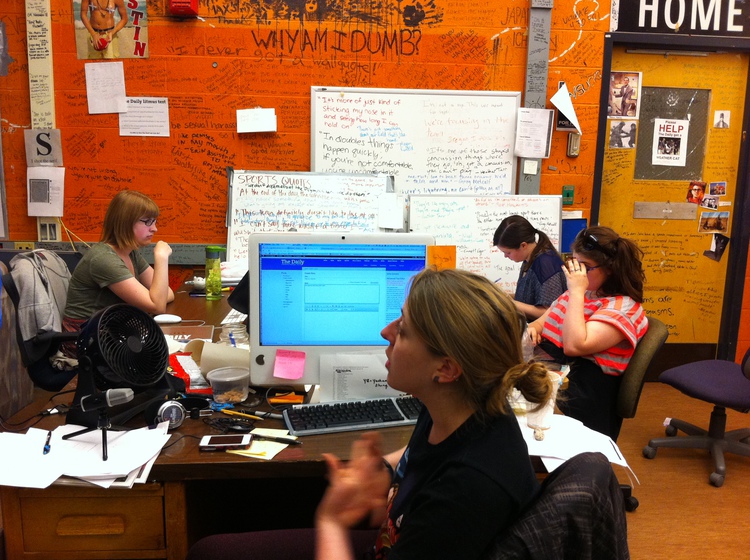Process and Activity
As we found from our secondary research, the publishing space is vast and filled with many unsolved problems. With more print publishers starting to integrate a digital presence, there is a need to continue producing quality journalism, increase consumer engagement, integrate new technologies, and discover new, successful business models. Furthermore, our research revealed that in addition to platforms and methods of consumption of news and media, the type of news content is also changing. Additionally, on the ideation side, we were starting to also look at content creation as a possible direction in addition to how content is consumed. We figured that a good way to dig into this space effectively was to start talking to publishers. For this we chose to do contextual interviews at The Daily, a student run newspaper at the University of Washington, Seattle. We visited their newsroom during peak activity hours of 9-11 PM and spoke to their Editor-in-Chief, Content Editor and Arts Editor.
Moreover, we thoroughly observed the workflow at the The Daily, which we noticed was very complex. There was a lot of back and forth exchange of content and media between writers, editors, designers and photographers. They currently use multiple tools, and in some cases have to use different sharing platforms for different types of media. This further adds to the complexity. A better collaborative system would be more supportive of this complicated exchange and editing process.
-750x342-7c7168.JPG)


Key Findings and Observations
It was apparent that they were aware of the need to work towards integrating interactivity and moving more toward their digital platform, however, access to the required resources and expertise seem to be a deterrent. The usefulness of a seamless way of integrating media and interactive elements like audio, video, slideshows etc also came up as we spoke to the editors. In terms of comparing their digital vs. print presence, surprisingly, we found that print is still their first priority and most stories - with the exception of breaking news stories that need an immediate push - are published for print and converted to the digital version with additional content as a later step. However, they do maintain an active digital presence on social media websites like Facebook and Twitter and have an iPad app. Interestingly, their statistics showed that their homepage gets low views because for the online content, most page visits occur via social media links which point straight to articles. This is interesting because it starts to show how social media changes the way news is consumed.
Implications for Design and Project Next Steps
What came out of this study encouraged us to dig deeper into the publishing industry, its shift from print to digital and the effect of social media and new forms of media. As a next step we did a thorough review and analysis of the Pew Research Center’s Journalism Project on the State of the News Media 2014.
